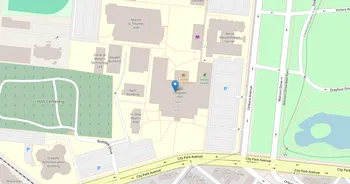Crescent City Bartending School : Overview, Courses, Scholarships & Rankings
About Crescent City Bartending School
New Orleans is a cocktail capital, and Crescent City Bartending School leans into that heritage. Known for hands-on instruction, it blends technique, flavor balance, and guest-centered service with steady attention to safety and professionalism. Campus practice spaces mirror real service, with access to pro tools and staff support. Student services focus on readiness, study help, and guidance on responsible service.
Student life feels collaborative and fast-paced. Recipe labs, tastings, and speed rounds build confidence without ego. The culture is service-first, detail minded, and welcoming. Career prep has a reputation for being direct, offering local connections, resume help, and audition tips. And the city is a classroom, with openings across bars, restaurants, hotels, and festivals. Expect small traditions, like house cocktail showcases or mock shift nights that nod to New Orleans flavor.
Key Institutional Details
Contact & Profile
Academic & Institutional
Academic Programs & Fields of Study
Crescent City Bartending School offers 2 degree programs across 1 major academic fields, graduating approximately 590 students annually. The most popular fields by graduate volume are Personal Services (2 programs, 590 graduates). Explore program details, award levels, and graduate demographics below.
Personal Services (2 programs, 590 graduates)
Hospitality Management, Culinary Arts and Personal Care
| Program Name | Graduates | Gender Distribution | Award Levels | CIP Code |
|---|---|---|---|---|
| Casino Dealer Training | 564 |
|
Other Award
|
12.0602 |
| Bartending | 26 |
|
Other Award
|
12.0502 |
Tuition, Fees & Estimated Costs
Overview of tuition rates, housing, and other annual education expenses for undergraduate and graduate students
Financial Aid & Student Support
Summary of scholarships, grants, student loans, and financial aid statistics for undergraduate students
Student Success Metrics
Graduation rates and post-graduation earnings to help assess student outcomes and long-term value of education.
Loan Burden & Repayment Outcomes
Breakdown of loan repayment rates and student debt levels by income and dependency status.
Frequently Asked Questions
Find answers to the most common questions about Crescent City Bartending School
What academic programs and degree levels does Crescent City Bartending School offer?
Crescent City Bartending School offers 2 academic programs across 1 major fields of study, with available degree levels: Other Award.
Most popular program areas include:
- Hospitality Management, Culinary Arts and Personal Care (2 programs)
Data based on IPEDS program completions for 2023-2024 academic year. Numbers reflect programs where students graduated, not all offered programs.
What financial aid and scholarships are available at Crescent City Bartending School?
Crescent City Bartending School provides financial aid to 73% of first-time, full-time students, with average grants of $5,000 and average loans of $5,775.
Average financial aid amounts by type:
- Pell grants: $5,000
- Federal loans: $5,775
The university supports 459 students with grants and 97 students with loans annually.
Data based on IPEDS for 2022-2023 academic year. Financial aid amounts and percentages may vary by program, enrollment status, and individual circumstances.
What is the average salary for Crescent City Bartending School graduates?
Crescent City Bartending School graduates earn a median salary of $22,089 after 6 years and $22,407 after 10 years.
The salary range 10 years after graduation spans from $11,250 (25th percentile) to $39,581 (75th percentile), with top earners reaching $49,900 (90th percentile).
Data based on IPEDS for 2022-2023 academic year. Salary data reflects graduates who received federal financial aid (approximately 60% of all graduates). Actual earnings may vary significantly based on program, location, and individual circumstances.
Related Universities




Found something useful? Help others discover it too! Share with friends, on social media, or save for later - every share helps someone find the information they need.